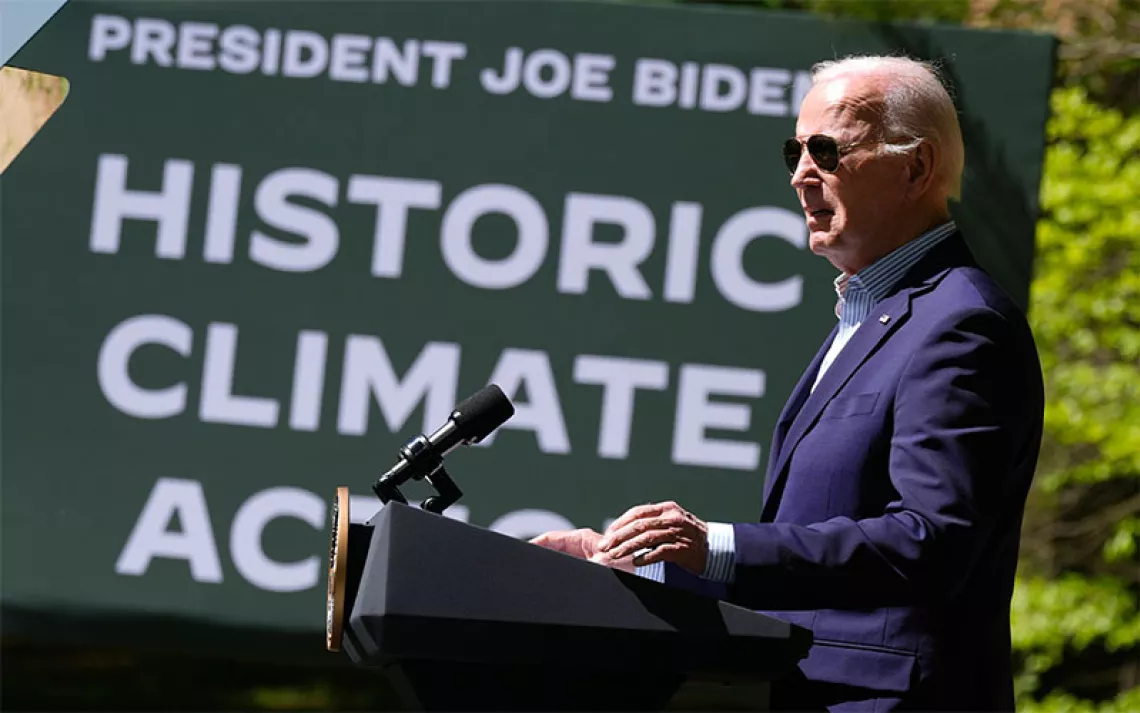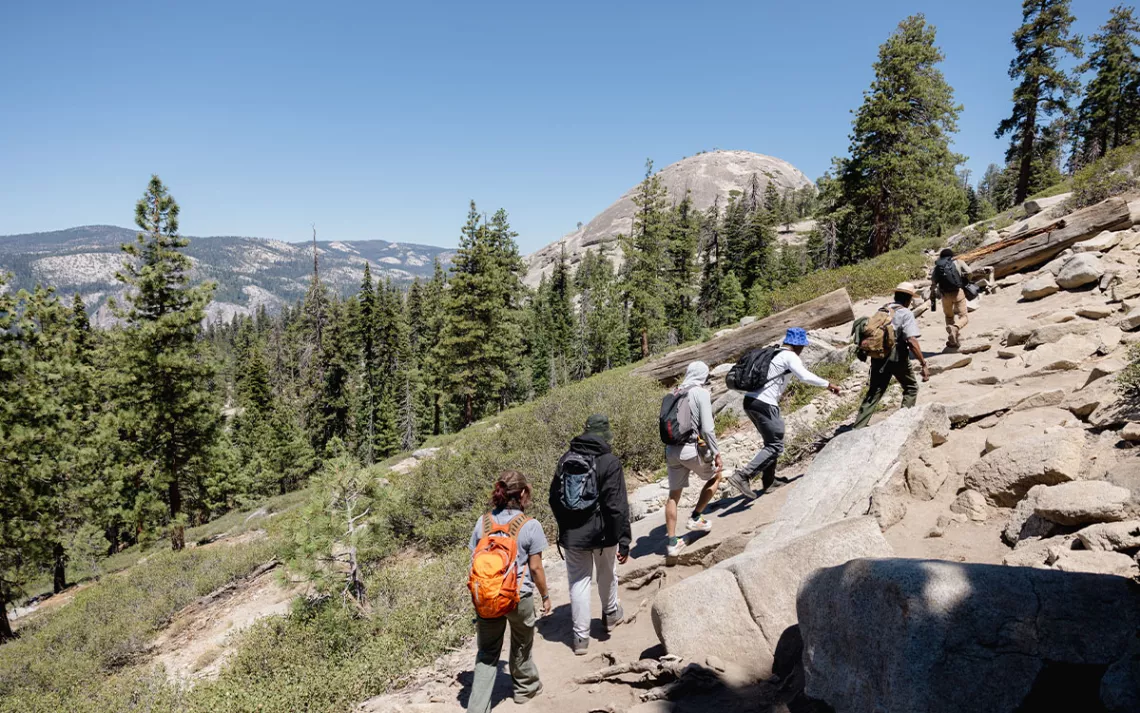Kiersey Clemons Goes to Bears Ears
The Flatliners actress spends the weekend with local Native Americans and gains a new perspective on the national monument

Photos courtesy of the Sierra Club
Established by President Obama in the twilight of his administration, southeastern Utah’s Bears Ears National Monument has become a flash point in the long-standing struggle over public lands in the United States. The national monument’s namesake, twin butte rock formations, conjure a bear overlooking the mesas, redrock canyons, and piñon-juniper treetops that comprise one of the most culturally and spiritually significant landscapes for five Native American nations in the Southwest: the Navajo, Hopi, Uintah & Ouray Ute, Ute Mountain Ute, and Zuni.
Before the Trump administration denounced Bears Ears National Monument as evidence of an alleged “federal land grab”—and before Interior Secretary Ryan Zinke made news in June by recommending that Bears Ears be reduced from its current 1.35 million acres to 160,000 (which would leave more land open to mining and drilling)—many Americans hadn’t even heard of Bears Ears. Members of those five tribes, however, have lived off its land since long before white settlers showed up and made Utah a state. These citizens—many of whom now live in poverty—say that not only do they depend on Bears Ears for food, shelter, healing, and spiritual sustenance, but that it’s also a shrine to their ancestors.
In July 2015, the five sovereign nations united in their efforts to conserve the Bears Ears cultural landscape by founding the Bears Ears Inter-Tribal Coalition. A total of 30 tribes have since expressed support for protecting the landscape for future generations. The Inter-Tribal Coalition was instrumental in getting President Obama to declare Bears Ears a national monument that would be co-managed by the tribes and U.S. federal agencies. The co-management system would be the first of its kind in the continental United States.
 Mary Benally, a Navajo member who is also of Hopi descent, is on the board of Utah Diné Bikéyah, the Native American–led grassroots group that developed the initial draft of the monument proposal in 2013. Benally says she’s watched as the ancient pottery, jewelry, and hatchets that studded the Bears Ears mesas during her childhood gradually vanished, and as the habitats of its resident wildlife degraded. The land is where she taught her daughter, Tara, to forage herbs and plants for food and healing aids.
Mary Benally, a Navajo member who is also of Hopi descent, is on the board of Utah Diné Bikéyah, the Native American–led grassroots group that developed the initial draft of the monument proposal in 2013. Benally says she’s watched as the ancient pottery, jewelry, and hatchets that studded the Bears Ears mesas during her childhood gradually vanished, and as the habitats of its resident wildlife degraded. The land is where she taught her daughter, Tara, to forage herbs and plants for food and healing aids.
Last month, for National Public Lands Day, Mary and Tara Benally hosted a first-time visitor to Bears Ears: Kiersey Clemons, a 23-year-old actress from Los Angeles (pictured with Mary, above). Clemons found fame through Netflix’s 2015 movie Dope, has since appeared on episodes of Transparent, and recently starred in the remake of Flatliners with Ellen Page and Diego Luna.
Clemons grew up hiking and camping in Southern California, but she’d never spent any time in the craggy Southwest. Nor had she spent a night in a tepee, learned to gather wild onions and sumac berries for soup, collected sage leaves to throw over a fire for physical and spiritual purification, or watched red-tailed hawks and golden eagles soar over mesas.
 After her weekend at Bears Ears, Clemons, who this month stars in an animated Michael Jackson–themed CBS Halloween special, described the land in a video (scroll to the bottom) as one of the “most significant yet little known cultural landscapes in the U.S., with at least 10,000 years of human history.” Of its proposed reduction, she says, “Just like the Dakota Access Pipeline, this illegal land grab would result in the diminishment of tribal sovereignty and put Bears Ears at risk of for-profit development, looting, and grave-robbing.”
After her weekend at Bears Ears, Clemons, who this month stars in an animated Michael Jackson–themed CBS Halloween special, described the land in a video (scroll to the bottom) as one of the “most significant yet little known cultural landscapes in the U.S., with at least 10,000 years of human history.” Of its proposed reduction, she says, “Just like the Dakota Access Pipeline, this illegal land grab would result in the diminishment of tribal sovereignty and put Bears Ears at risk of for-profit development, looting, and grave-robbing.”
Clemons recently shared with Sierra more impressions and memories of her time exploring Bears Ears.
Sierra: What made you decide to visit Bears Ears?
Kiersey Clemons: When I found out I’d have an opportunity to meet with Mary and Tara, I got really excited to just go and learn. And to ask all the questions everyone else is wondering right now: What does the land mean to them, what’s their intention, and how are they tackling the issues they’re facing with the Trump administration?
What made the strongest impression on you?
I walked away less angry about the rollback. Mary has this view that everything is done through prayer—that they’re not there to fight or to create conflict. Native people think the land is about healing. And it is. The land needs to be protected so it can continue to heal and have its ripple effect. Mary grew up teaching Tara about the native traditions and about where she came from. They both grew up running around and playing there as a kid. Mary and Tara and their communities have ancestors there, and they want them to rest easy—and they want future generations to be able to climb the same rocks and see the ancient shrines and carry out indigenous history that is obviously being lost. To be there, seeing all the ancient shrines, was a really emotional experience. I had a fantastic weekend—I even had a friend perform Reiki on me!
Reiki is a physical and emotional healing modality in which universal energy, often referred to as “chi,” is purportedly transferred through a practitioner’s palms to the patient. Can you talk about your experience receiving Reiki at Bears Ears?
It was interesting, because before she started she asked what my favorite color was, and I said it was orange, and she said, “OK, imagine you’re wrapped in the color orange,” and it was ironic because there’s so much orange all around you there—clay, rocks, and rust-colored mountains. I was literally wrapped in all this orange clay. The trees were changing colors. It was amazing.
What surprised you most?
 The fact that for Mary and Tara (pictured, right) and the Inter-Tribal Coalition, this conflict isn’t coming from a place of politics. Obviously, they want to protect their land from grave-robbing and looting, but more importantly, protecting this land is a healing process. We read about this issue through such a political narrative, but it’s not about winning or who’s right or who’s wrong even—the native people don’t feel like they need to fight or be definitive. It’s really about healing, and they’re trying to do that through prayer.
The fact that for Mary and Tara (pictured, right) and the Inter-Tribal Coalition, this conflict isn’t coming from a place of politics. Obviously, they want to protect their land from grave-robbing and looting, but more importantly, protecting this land is a healing process. We read about this issue through such a political narrative, but it’s not about winning or who’s right or who’s wrong even—the native people don’t feel like they need to fight or be definitive. It’s really about healing, and they’re trying to do that through prayer.
What stands out most in your memories?
I miss the clay and the way it feels under your feet. I grew up loving the outdoors, but I grew up around the beach. It was less about trees and dirt, more about sand and water. I just finished filming a movie over the summer called Sweetheart, in Fiji, one of the most beautiful places in the world, and I was lucky to get to spend a lot of time in the water. But I realized all of nature has that same effect on you when you’re immersed in it. And I loved being in Bears Ears and learning about all of the uses for the natural resources there—what you can eat, what you can put on your face, and the various healing uses of the plants and herbs.
What do you wish more people knew about Bears Ears?
That this is the first protected national monument of its kind for Native Americans—we had five tribes come together to agree on one thing, which doesn’t happen very often. I think it’s important, especially for my generation to know, because hopefully it’s inspiring. If protecting Bears Ears is worth them coming together for, then it’s worth our country and others coming together for it as well.
I stand with Bears Ears because protecting the lands that give back to us should be more of a priority. We need to remember that we need Mother Nature—and Mother Nature does not need us.
 The Magazine of The Sierra Club
The Magazine of The Sierra Club



